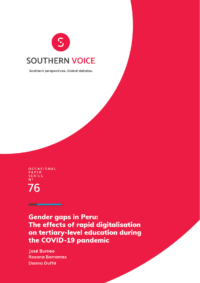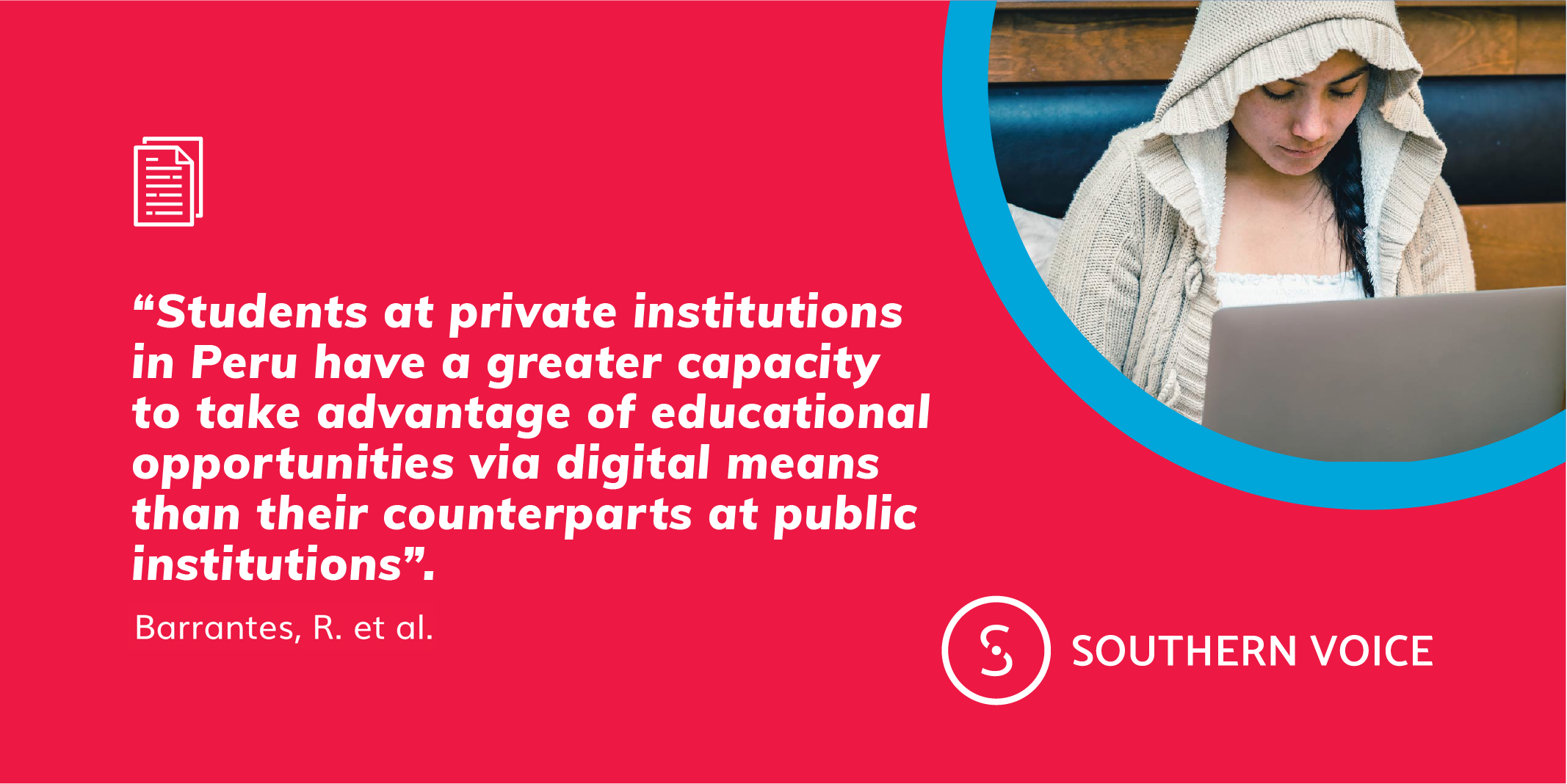 In Peru, the transition of public education from in-person schooling to online classes due to the COVID-19 pandemic has presented challenges for students, teachers, and state officials. This study explores the difficulties of this process and its repercussions, the goal of which is to better understand the situation of public universities throughout the pandemic, specifically in the case of female students.
In Peru, the transition of public education from in-person schooling to online classes due to the COVID-19 pandemic has presented challenges for students, teachers, and state officials. This study explores the difficulties of this process and its repercussions, the goal of which is to better understand the situation of public universities throughout the pandemic, specifically in the case of female students.
Researchers used a qualitative methodological approach with interviews and focus groups, conducted in three different phases: the exploratory phase, the in-depth phase with students, and the phase with administrative authorities. We noted the existence of gaps that affect the entire student population and that are associated with pre-existing inequalities in two areas: (i) access to and use of Information and Communications Technologies (ICT); and (ii) women’s performance at public university institutions given differences in the distribution of domestic roles and gender violence in virtual spaces. Change in class schedules, from later in the day to early in the morning was a common strategy used in the former case to mitigate inequalities. In the latter case, inequalities directly affected participation, given that they led to class desertion.
The development of future public policies requires a focus that takes into account the structural inequalities that span the experience of online classes and the thematic inequalities associated with gender and its impact on studying conditions for women.
En el Perú, la transición de la educación pública de la modalidad presencial a la digital, a raíz de la pandemia del COVID-19, ha presentado retos para estudiantes, docentes y funcionarios estatales. Este estudio explora las dificultades de este proceso y sus impactos, con el objetivo de comprender mejor la situación de la educación de tercer nivel pública durante la pandemia, particularmente para las estudiantes mujeres.
El estudio utilizó una metodología cualitativa, con entrevistas y grupos focales que se aplicaron en tres momentos: la etapa exploratoria, la etapa de profundización con las y los estudiantes, y la etapa de trabajo con las autoridades. Constatamos la existencia de brechas que afectan a toda la población estudiantil, asociadas a desigualdades preexistentes en dos campos: (i) el acceso y uso de las Tecnologías de la Información y Comunicación (TIC), y (ii) el desempeño de las mujeres en la educación de tercer nivel pública, debido a diferencias en la distribución de roles en el hogar y la violencia de género en los espacios virtuales. Entre las estrategias utilizadas para mitigar las desigualdades, en el primer caso destaca el cambio de los horarios de clases: de asistir durante el día a hacerlo en las madrugadas; en el segundo caso, las desigualdades afectaron directamente la participación, pues generaron el abandono de cursos.
La elaboración de futuras políticas públicas demanda un enfoque que tome en cuenta las desigualdades estructurales que median la experiencia educativa a distancia, así como las desigualdades temáticas asociadas al género y su impacto en las condiciones de estudio de las mujeres.


